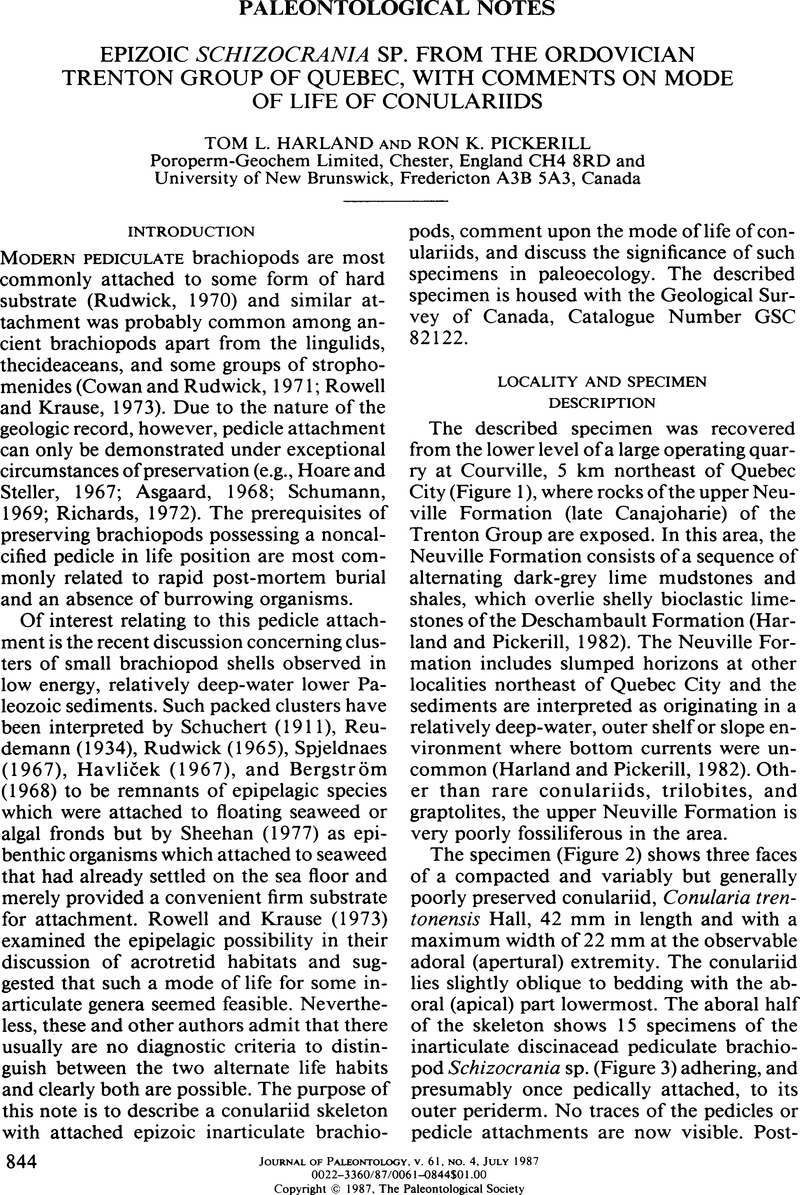Crossref Citations
This article has been cited by the following publications. This list is generated based on data provided by Crossref.
Taylor, P.D.
and
Wilson, M.A.
2003.
Palaeoecology and evolution of marine hard substrate communities.
Earth-Science Reviews,
Vol. 62,
Issue. 1-2,
p.
1.
Van Iten, Heyo
de Moraes Leme, Juliana
Simões, Marcello Guimarães
Marques, Antonio Carlos
and
Collins, Allen G.
2006.
Reassessment of the phylogenetic position of conulariids (?Ediacaran‐Triassic) within the subphylum medusozoa (phylum cnidaria).
Journal of Systematic Palaeontology,
Vol. 4,
Issue. 2,
p.
109.
Lucas, Spencer G.
2012.
The Extinction of the Conulariids.
Geosciences,
Vol. 2,
Issue. 1,
p.
1.
COLMENAR, JORGE
and
ÁLVARO, J. JAVIER
2015.
Integrated brachiopod-based bioevents and sequence-stratigraphic framework for a Late Ordovician subpolar platform, eastern Anti-Atlas, Morocco.
Geological Magazine,
Vol. 152,
Issue. 4,
p.
603.
Topper, Timothy P.
Zhang, Zhifei
Gutiérrez-Marco, Juan Carlos
and
Harper, David A. T.
2018.
The dawn of a dynasty: life strategies of Cambrian and Ordovician brachiopods.
Lethaia,
Vol. 51,
Issue. 2,
p.
254.
Bruthansová, Jana
and
Van Iten, Heyo
2020.
Invertebrate epibionts on Ordovician conulariids from the Prague Basin (Czech Republic, Bohemia).
Palaeogeography, Palaeoclimatology, Palaeoecology,
Vol. 558,
Issue. ,
p.
109963.
Sarsembaev, Zhiger A.
and
Marusin, Vasiliy V.
2022.
Nonmineralized triradial conulariids from the lowermost Cambrian Stage 2 of the Olenek Uplift, Siberian Platform.
Journal of Paleontology,
Vol. 96,
Issue. 4,
p.
791.
Van Iten, Heyo
Gutiérrez-Marco, Juan Carlos
Muir, Lucy A.
Simões, Marcello G.
and
Leme, Juliana M.
2022.
Ordovician conulariids (Scyphozoa) from the Upper Tiouririne Formation (Katian), eastern Anti-Atlas Mountains, southern Morocco.
Geological Society, London, Special Publications,
Vol. 485,
Issue. 1,
p.
177.
Marek, Jaroslav
Šarič, Radko
and
Kácha, Petr
2023.
Organisms Attached to Conulariid Thecae from the Upper Ordovician of the Barrandian Area (Czech Republic).
Folia Musei rerum naturalium Bohemiae occidentalis. Geologica et Paleobiologica,
Vol. 57,
Issue. 1-2,
p.
43.
Vinn, Olev
Holmer, Lars E.
and
Wilson, Mark A.
2024.
Evolution of brachiopod symbiosis in the early Paleozoic.
Historical Biology,
Vol. 36,
Issue. 7,
p.
1274.



